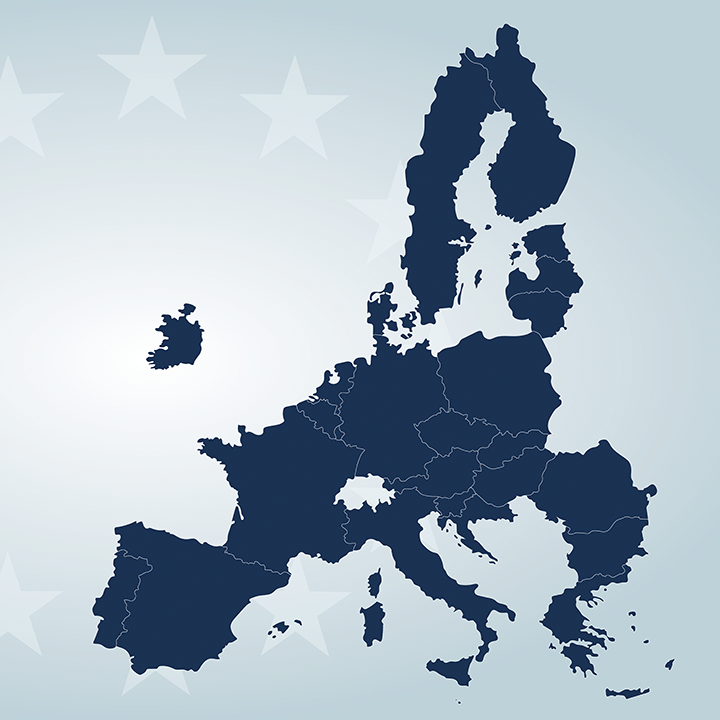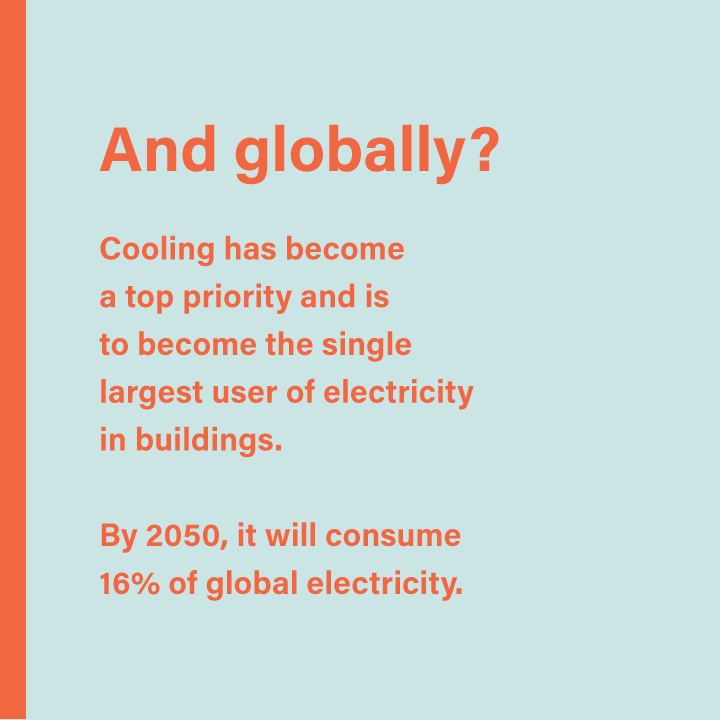Cooling as a facilitator for carbon neutrality
Heating & Cooling represents half of Europe’s total final energy consumption…
CO2 accounts for roughly 80% of the EU’s total greenhouse gas emissions, with most of it being related to the production and consumption of energy. Heating and Cooling represent half of the total final energy consumption in Europe, with approx. 80% still based on fossil fuels – mainly for heating. To achieve climate neutrality by 2050, it will therefore be essential to decarbonise heating.
… and is an essential part of the solution on the way to carbon neutrality by 2050
- Solutions are readily available but not broadly deployed yet:
- Heat pumps will enable the decarbonisation of heating via energy efficient electrification while simultaneously addressing the growing need for cooling and indoor air quality, demand side flexiblity and thermal storage solutions will facilitate the transition towards renewable energies, and digitalisation via BACS, IoT, AI will support the efficient use of energy and empower consumers to play an active role.

Where do we stand in the EU?
- Heating & cooling is the number 1 consumer² of renewable energy in Europe, followed by electricity and transport
- 50%² of the EU‘s final energy is used for heating & cooling, of which up to 6%³ is currently used for cooling
- 19%² of the EU‘s final energy used for heating & cooling is based on renewables.
- By 2030² the number of air-conditioners and refrigerators is expected to double in Europe.
- 12%² of the EU‘s final energy consumption in the tertiary sector is already today used for space cooling.
- By 2050, with business as usual, the cooling demand in the EU‘s residential sector is expected to be 4x higher² than in 2015
Major consumers: Supermarkets & datacentres
- 50%⁴ on average of the energy consumed in supermarkets is for refrigeration
- 40%⁵ on average of the energy consumed in datacentres is for cooling


Cooling is an intrinsic part of life, with demand only set to rise…
Urbanisation
80%⁶ of Europeans will live in urban areas by 2050.
We count on cooling…
to ensure healthy, productive (up to 15%⁷ more) and comfortable living and working spaces, fresh & safe food and best in class healthcare.
Wellbeing
75%⁸ of Europeans consider health & wellbeing as most important value for their happiness
We count on cooling…
to address the growing importance of health, comfort & well- being for Europeans as they spend 90%⁹ of their time indoors.
Cooling is an intrinsic part of life, with demand only set to rise…
Healthcare
50%¹⁰ of medicine on the market today is heat sensitive
We count on cooling…
to provide best in class healthcare, safe medicine and
vaccines.
Population
By 2030, the share of >65years old Europeans will have increased to 25%¹¹ vs. 19% in 2017
We count on cooling…
to be comfortable at home, and to protect the most vulnerable from extreme temperatures such as the heat wave in 2003 which led to an estimated 35,000 deaths in Europe¹².


Cooling is an intrinsic part of life, with demand only set to rise…
Food cold chain
20%¹³ of food in the EU is lost or wasted every year
We count on cooling…
to ensure an adequate and uninterrupted cold chain to handle resources responsibly and prevent food loss & waste when 43 million Europeans¹³ cannot afford a quality meal every second day.
Digitalisation
By 2030, the number of devices connected to the Internet will have reached 125 billion¹¹ globally, nearly 5 times more than in 2017
We count on cooling…
to keep the Internet running: In 2020, datacentres are pojected to use 4%⁵ of the total annual energy consumed in the EU, roughly twice as much as in 2007.
¹EEA, Heating and cooling degree days 2019
²European Commission, Heating and cooling strategy 2016
³Oko Institut, Contribution of Renewable Cooling to the Renewable Energy Target of the EU
⁴IIR, Advances in supermarket refrigeration 2018
⁵JRC, Trends in data centre energy consumption under the European Code of Conduct for Data Centre Energy Efficiency 2017
⁶European Commission, Urban Europe 2016
⁷Velux, The Healthy Homes Barometer 2018
⁸Eurobarometer 69 Values of Europeans
⁹European Commission, Indoor air pollution 2003
¹⁰IIR, Heat Sensitive Products 2016
¹¹ESPAS, Report on global trends 2019
¹²Earth Policy Institute, Record Heat Wave in Europe Takes 35,000
¹³Fusions, The Fight Against Food Waste 2016

